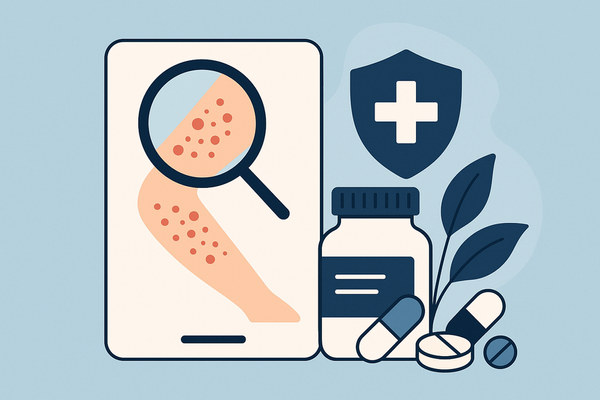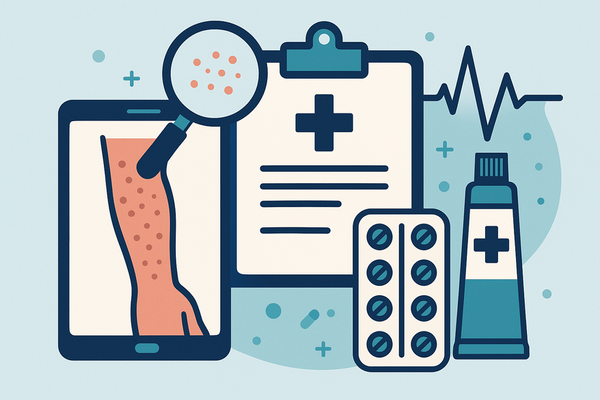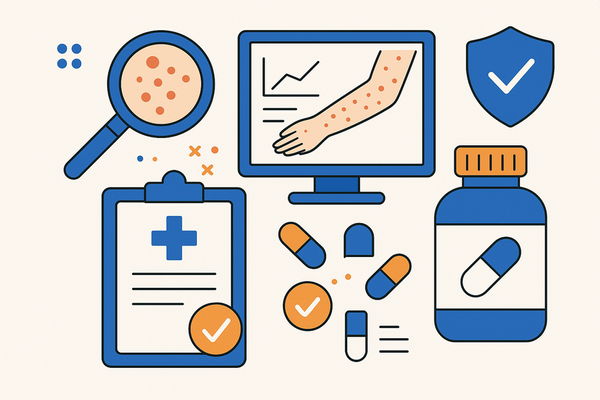Exploring New Features in AI Rash Diagnosis for 2025 Dermatology
Discover how new features in AI rash diagnosis are transforming dermatology in 2025 with enhanced accuracy and speed, benefiting clinicians and patients.
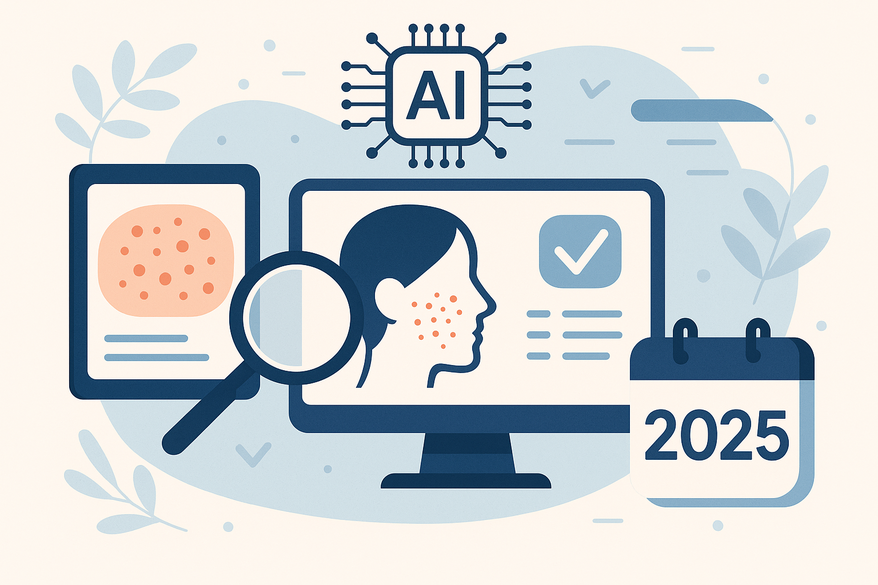
Estimated reading time: 8 min read
Key Takeaways
- Advancements in AI image recognition and multi-modal data integration accelerate and refine rash diagnosis.
- Real-time analysis with confidence scoring enhances clinician decision-making and reduces uncertainty.
- 2025 AI models outperform traditional systems, delivering faster, more accurate, and scalable solutions.
- Implementation challenges include EHR integration, ethical considerations, and technical limitations.
- Future innovations: federated learning, adaptive AI, and wearable tech for remote monitoring.
Table of Contents
- Introduction
- Context and Background
- Deep Dive into New Features
- A. Enhanced Image Recognition & Deep Learning
- B. Integration of Multi-Modal Data
- C. Real-Time Analysis & Confidence Scoring
- D. Case Example: Advanced Differential Diagnosis Tool
- Comparative Analysis
- Benefits and Impact
- Practical Implementation & Challenges
- Future Directions and Innovations
- Conclusion
- FAQ
Introduction
New features in AI rash diagnosis represent cutting-edge developments in artificial intelligence–driven skin-condition evaluation. These innovations bring advanced image processing, data fusion, and instant feedback to dermatology, reducing subjective judgment and speeding analysis for clinicians and patients alike.
AI’s role has expanded from simple image sorting to comprehensive diagnostic support. In dermatology, AI tools now spot subtle signs of skin disease, rank possible causes, and suggest next steps—minimizing errors and accelerating treatment.
Accurate rash diagnosis is critical since many skin conditions can appear similar. Diverse patient histories and environmental factors complicate visual assessment, making advanced AI tools essential for guiding clinicians toward the right tests and therapies promptly.
Platforms like Rash Detector let users upload images for instant analysis. Here’s a sample AI-generated report:
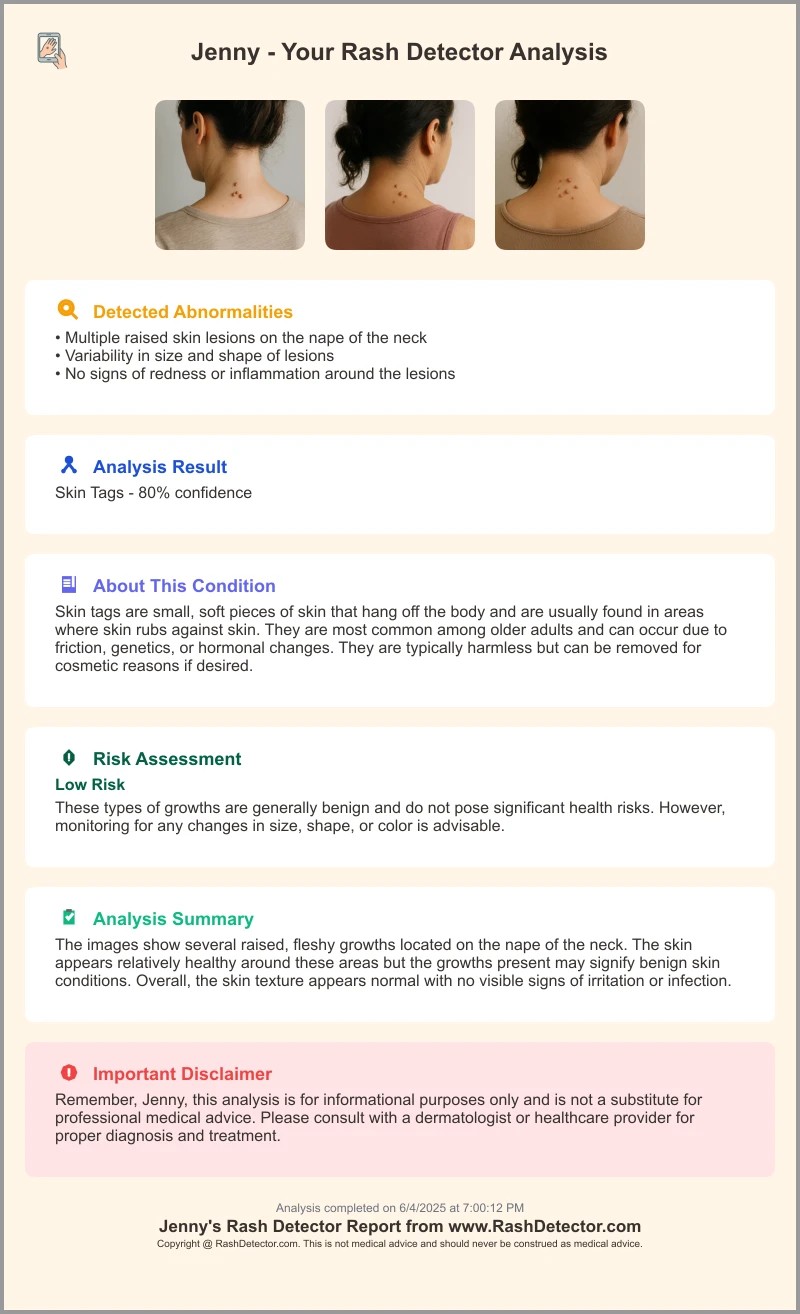
Sources:
Context and Background
Traditional rash diagnosis relies on visual examination, patient self-reporting, and sometimes biopsies or lab tests. While effective, these methods have drawbacks:
- Clinician subjectivity and training variability
- Potential misdiagnoses or delays in treatment
AI in dermatology transforms this process by leveraging large image libraries and patient data to deliver objective, repeatable assessments. Milestones include early melanoma classification with single-image deep learning, expansion to multi-condition datasets, and integration of clinical context with global data.
Advanced AI now factors in medical history, environmental data, and genetic markers—reducing missed cases and accelerating care for complex or rare rashes. For more on the technical workflow and an overview of how AI diagnoses rashes, visit these detailed resources.
Sources:
- Frontiers in Big Data: AI in dermatology
- EMJ Reviews article on AI-powered model
- London Dermatology Centre blog on breakthroughs
Deep Dive into New Features
A. Enhanced Image Recognition & Deep Learning
New systems process clinical photos, dermoscopic scans, body images, and histopathology slides, learning from over two million dermatological images across skin tones. Convolutional neural networks (CNNs) and transformer models extract features—detecting subtle textural changes like scaling, pigmentation shifts, or vascular patterns.
This advanced recognition reduces overlooked early signs and improves generalizability. For more, see the deep learning overview.
Source:
B. Integration of Multi-Modal Data
AI now fuses clinical photographs, patient histories, environmental factors (humidity, allergen exposures), and genetic markers—creating a comprehensive clinical picture. Benefits include nuanced differential diagnoses, personalized treatments, and early alerts for high-risk conditions like drug reactions.
Sources:
C. Real-Time Analysis & Confidence Scoring
Instant diagnostic suggestions on clinician devices now include confidence scores (e.g., 87% likelihood of psoriasis vs. eczema) and automated alerts for low-confidence cases—prompting biopsies or referrals. Suggested next steps cover lab tests, topical treatments, or specialist consultations.
Source:
D. Case Example: Advanced Differential Diagnosis Tool
A leading tool covers 300+ conditions, ranking differential diagnoses by confidence and integrating patient history, medications, and triggers. Visual overlays highlight diagnostic features—improving referral accuracy and reducing biopsies.
Source:
Comparative Analysis
Traditional AI models focused on binary tasks, small homogeneous datasets, and single-image inputs. In contrast, 2025 systems use self-supervised learning on diverse multi-modal data—rivaling expert clinician accuracy and reducing bias.
Sources:
Benefits and Impact
Key benefits:
- Improved diagnostic accuracy: Up to 20% fewer misdiagnoses for similar rashes, better early detection.
- Faster processing: Instant results cut clinic time by 30–50%.
- Enhanced patient outcomes: Prompt therapy, fewer complications, personalized adherence.
- Scalability: Deployable in primary care, telemedicine, urban hospitals, and remote settings.
Sources:
Practical Implementation & Challenges
Implementing new AI features requires:
- EHR Integration: Embedding AI in electronic health records, training staff on AI dashboards.
- Ethical & Regulatory: Algorithm transparency, mitigating bias, GDPR/HIPAA compliance.
- Clinical Adoption: Validating through studies, hands-on training, demonstrating ROI.
- Technical Limitations: Dependence on image quality, handling real-world variability.
Sources:
Future Directions and Innovations
Emerging trends:
- Federated Learning: Decentralized training across regions, enhancing privacy and diversity.
- Real-Time Adaptive AI: Continuous learning from new cases without full retraining.
- Wearable Tech & Mobile Apps: Self-monitoring apps, sensors tracking triggers and lesions.
Sources:
Conclusion
The 2025 AI rash diagnosis features—enhanced image recognition, multi-modal integration, real-time analysis, and advanced decision support—are revolutionizing dermatology. By overcoming traditional limitations, these tools deliver faster, more accurate, scalable solutions. Clinicians and healthcare leaders should stay informed to drive better outcomes and embrace AI’s future in dermatology.
FAQ
- How accurate are AI rash diagnosis systems? Current models achieve accuracy comparable to expert dermatologists, with up to 20% fewer misdiagnoses for similar rashes.
- What data do these AI tools use? They leverage clinical images, patient history, environmental factors, and genetic markers for comprehensive analysis.
- Can these systems replace dermatologists? No—AI acts as a decision-support tool, augmenting clinicians’ expertise and reducing uncertainty.
- Are patient data secure? Yes—federated learning and strict compliance with GDPR and HIPAA ensure privacy and security.


